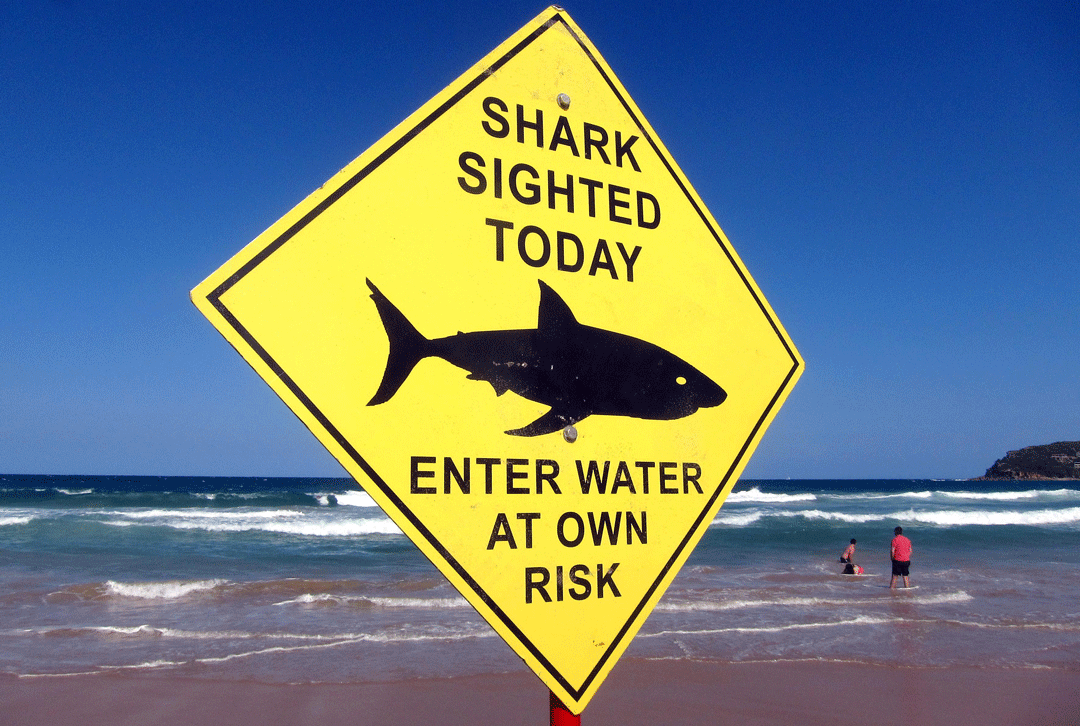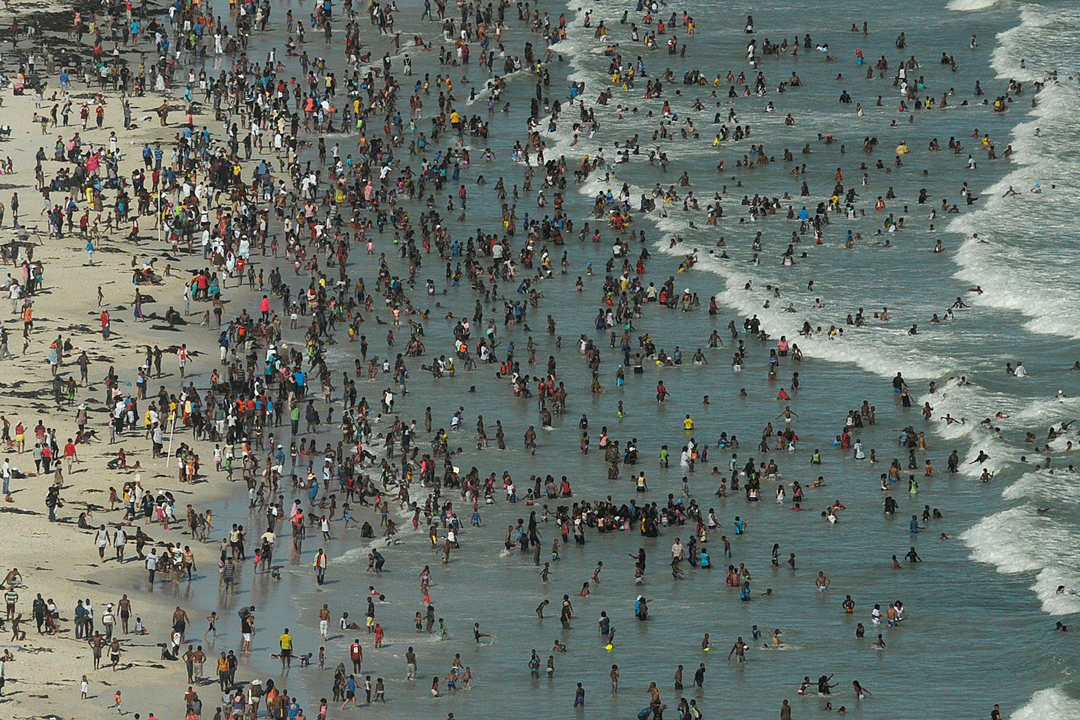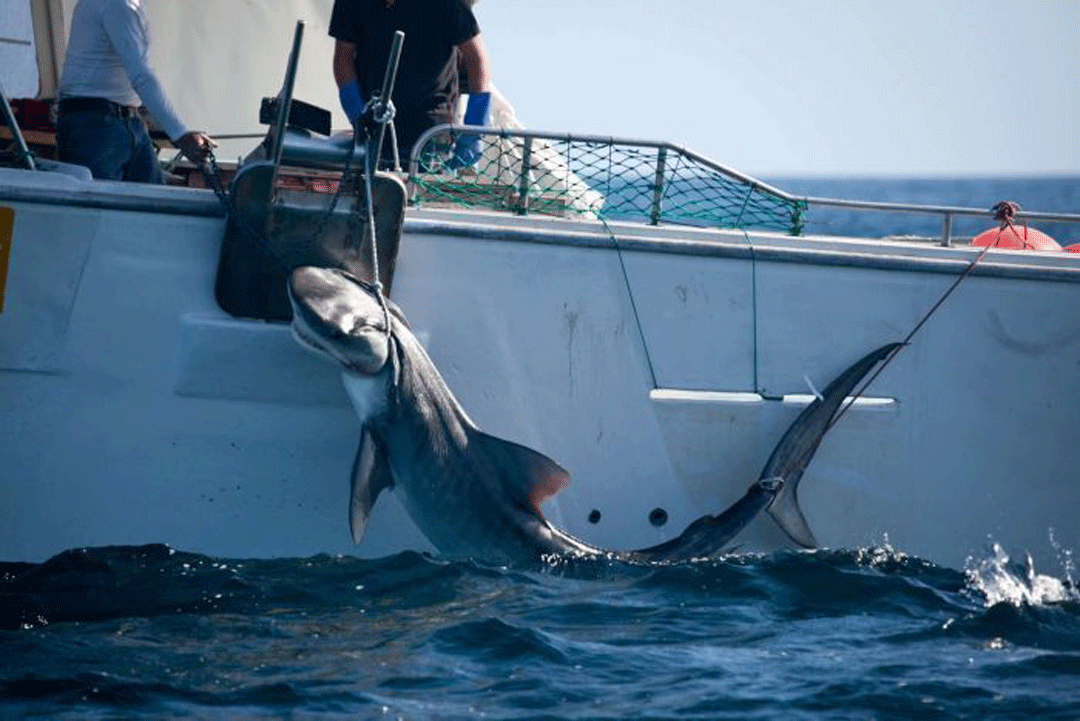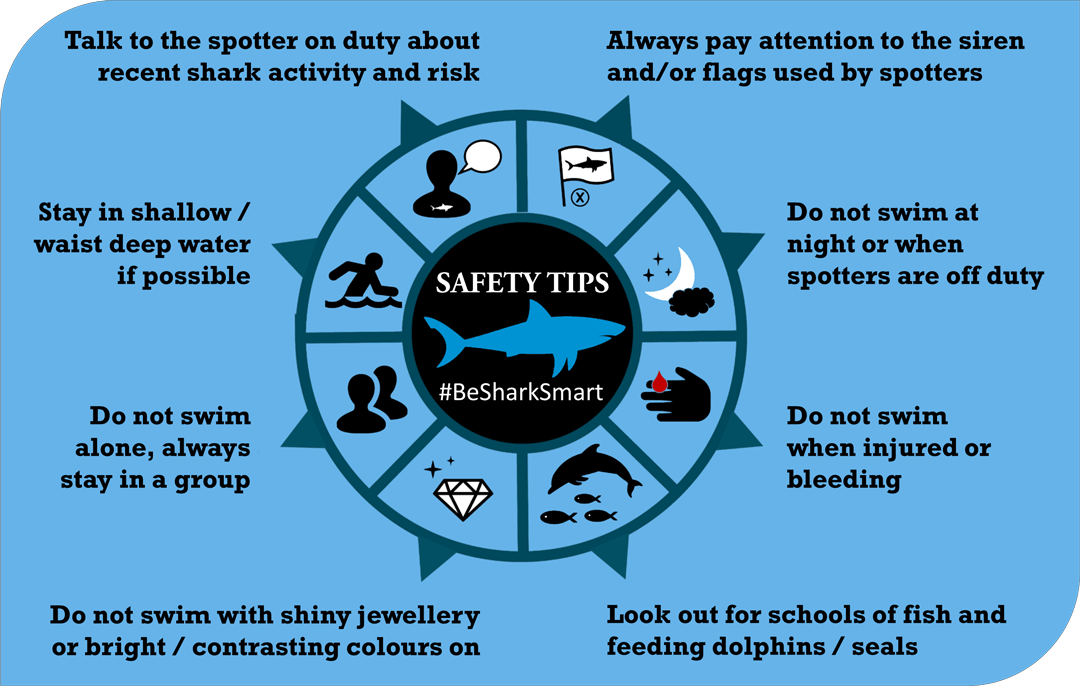Who is responsible for keeping you safe from sharks?

Photo © David Gray | Reuters
Summer is nearly here in the Southern hemisphere, and for those of us living on the coast, that means only one thing… it’s beach time! Whatever your activity of choice, be it surfing, swimming, paddling or diving, there is nothing better than cooling off and enjoying the freedom of splashing in the sea on a long hot day.
But just as the weather heats up, so does the conflict. Humans are not the only ones who like to spend their summers at the beach. For many large, predatory shark species, the inshore zone is an important seasonal habitat, as the warm water during spring/summer leads to increased prey availability and feeding opportunities along the coast. This leads to significant spatial overlap between people and sharks at this time of year, increasing the risk of shark bite incidents.

Our love of the ocean means that there is often a significant spatial overlap between sharks and people in the near shore area, particularly during the peak summer months when water user and shark activity are highest. Photo © Thomas Peschak
Although rare, there is no denying the far-reaching impacts of shark bites, both emotionally and economically. They do not just affect the victim who is injured or tragically loses their life, they affect whole communities, with a collective trauma that creates a demand for “something to be done”.
But what should be done? Who should be ensuring you are safe when you are enjoying your well-earned break at the beach? And can you trust them to make the best decision to not only protect you, but also protect the integrity of the oceans that you enjoy so much?
The answer to these questions relies on a number of factors, but the first thing to consider is where exactly are you swimming or surfing? South Africa has over 3,000km of coastline while Australia has nearly five times that amount. Every time you set foot in the ocean in temperate waters around the world you run the small risk of encountering a shark, and unfortunately, it is impossible to expect authorities to protect every inch of coastline, especially in remote areas that are often popular surfing spots. In reality, only a very small area of our coasts (<1%) have any kind of shark safety measures in place, and determining if your favourite beach has any such measures is the first step to becoming a responsible ocean user.
If you are using the 99% of the coastline that does not have shark bite mitigation measures in place, the onus rests solely on you as an individual to do all things possible to reduce your risk of encountering a shark. There are many simple steps you can take to become “shark smart” and be prepared for the possibility of encountering a potentially dangerous shark. You can read more about these here.
If you are fortunate enough to be in an area where shark safety measures are in place, do you really understand how these measures are keeping you safe, and what their potential environmental impacts are?

In 2014 the Western Australia government implemented a short term shark cull after a spike in shark bite incidents in the area. Photo © Sea Shepherd Australia
At many shark-human conflict hotspots around the world, we look to governments to take on the responsibility of keeping our most popular beaches safe, and shark bite mitigation measures have been in place in many countries since the early 20th century. Historically, these strategies have relied on lethal control (i.e. killing sharks) either through targeted shark hunts after a shark bite incident, or sustained culling programs in the form of shark nets and drum lines. Many of these measures are still in place today, and while the jury is still out on exactly how effective they are at reducing the rate of shark bite incidents, one thing is for sure – their environmental impacts are huge. These impacts are not just seen on the populations of the potentially dangerous shark species they are targeting, but also on numerous species that become caught or entangled as bycatch, such as whales, dolphins, turtles, rays and harmless shark species, many of which are vulnerable or threatened with extinction. Given their destructive nature, there is no denying that lethal shark bite mitigation measures are neither environmentally responsible nor morally ethical, and as communities living along the coast we should be urging governments to stop defaulting to this archaic method of preventing shark bites and instead look to more sustainable solutions that adequately protect both people and sharks.

This mobula ray was caught and killed in the shark control net in Ballina, New South Wales, Australia. Photo © Tom Hughes | Sea Shepherd
These sustainable solutions do exist, and with recent technological advances, we are seeing more and more investment in alternatives to lethal control, ranging from high-tech electronic repellents and underwater sonar to the simpler but still effective shark exclusion barriers and shark spotters.
While this is a positive step forward, it is also important for water users to critically evaluate how effective these measures are before blindly putting faith in the powers-that-be. For some solutions, it can be more of a case of providing a “sense of security” than an actual effective safety measure. For example, many areas in Australia invest heavily in aerial patrols, using a helicopter or fixed-wing plane to fly over beaches twice a day to look for potentially dangerous sharks close to shore. While visual surveillance has been shown to be successful at reducing the spatial overlap between people and sharks with programs such as Shark Spotters in Cape Town, South Africa, the value in this mitigation measure is the continuous nature of the surveillance, which does not happen with aerial patrols that are only over a beach for a few minutes per day. To put it simply, you wouldn’t turn on the CCTV at your house for five minutes per day and expect to see every potential burglar in the area. Similarly, the aerial patrols will only protect water users from potentially dangerous sharks for the short period of time they are hovering over the beach, and for the rest of the day, the beach remains unprotected. To further compound this, the detection rates of aerial surveys have proven to be very low (between 12.5 and 17.1%), bringing their effectiveness into question even more. Despite this, aerial patrols have strong public support in Australia as many water users are unaware of their limitations, despite published research showing this.
Similarly, many people have no idea that the traditional (lethal) shark nets found at beaches in Queensland and New South Wales, Australia and Kwa-Zulu Natal, South Africa do not actually stop sharks from entering an area, but are in fact just floating fishing (gill) nets designed to catch and kill sharks. Many people choose to swim at netted beaches as they believe that there is zero possibility of encountering a shark there, completely unaware that the nets only stretch across a small section of the beach, do not enclose an area at all and that sharks can swim around and underneath them. In general, while authorities do not hide the design and purpose of the nets when asked, they also do not openly explain or educate the public as to the exact nature and impact of the nets, referring to the beaches as “protected bathing areas”, which further compounds the misconception that these areas are shark-free. .
Given these challenges, it is clear that ultimately, we are responsible for our own safety when it comes to reducing our own personal risk of encountering a shark. While governments have a responsibility to inform us about potential shark risk, especially if they have knowledge of high shark activity, at the end of the day it is as every sign will tell you – “swim at your own risk”! It is our responsibility as water users to “Be Shark Smart” when using the ocean, and that involves changing our behaviours to reduce the risk of encountering a shark as well as holding governments accountable for implementing sustainable and effective mitigation measures, not just those that make us “feel safer”.

Image © Shark Spotters
Our top 5 tips to #BeSharkSmart and be a responsible ocean user when it comes to shark safety:
- Know your area – Approach the local safety authority at the beach you are going to, whether it be Shark Spotters, Surf Lifesavers or Sea Rescue, and find out about any recent shark activity. Learn about the different times of year or environmental conditions that lead to increased shark activity and increased risk at your local beach.
- Use an area with a shark safety program in place – If you live in or are visiting an area that is a known shark hotspot, try to use beaches with existing shark bite mitigation measures to improve beach safety. Be sure to familiarise yourself with the program and follow all safety guidelines. If these measures are not sustainable or effective, put pressure on local government to investigate alternatives that protect both people and sharks.
- Learn warning signs of increased shark activity in an area(birds/dolphins feeding, whale carcasses etc) and simple behaviour changes that can reduce your risk such as swimming in groups, don’t swim in poor visibility conditions or at dawn/dusk etc. You can see more of these tips on the Shark Spotters website.
- Invest in a personal shark repellent that has been independently proven to be effective such as the Shark Shield or Freedom Surf + from Ocean Guardian. Beware of the many untested or ineffective products available on the market.
- If you are using a remote beach then BE PREPARED in case of a shark bite incident. Carry a shark attack kit with you, know how to use it, and have local emergency response contact details to hand. This can literally mean the difference between life and death.
